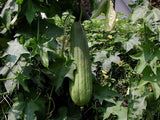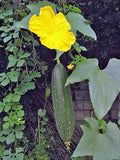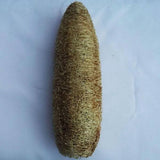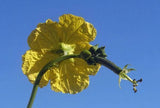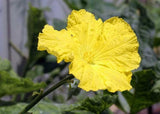Product Description: Luffa aegyptiaca Seeds — Grow Nature’s Soap, Kitchen, & Conservation Story
Plant more than just a vine—cultivate a symphony of texture, taste, and purpose. With these seeds, you’re inviting homegrown gourds that transform from tender vegetables to natural sponges, all while weaving through folklore, sustainability, and garden wildlife.
Bloom & Fragrance
-
Bloom Color: Bold bright yellow cup-shaped flowers, sizable and showy—spring to summer brings a sunlit display that lights up trellises and invites aerial spectators.
-
Fragrance: Though not famed for scent, these sunny blooms are pollinator magnets, painting the garden in golden flashes.
Hardiness & Growth
-
USDA Hardiness Zones: Zonal home is 8a through 11b—warm summers and long seasons are ideal for the fast-growing vines.
-
Growth Habit: A vigorous, annual climber reaching 30–50 ft, using tendrils to ascend trellises. Prefers full sun, warm (pH-neutral to slightly acidic), well-drained soil, and a steady supply of moisture in long, frost-free seasons.
Wildlife Interaction & Ecosystem Value
-
Butterfly & Moth Host: The plant is a known host for Hypercompe albicornis and Zeugodacus tau larvae—these gourds support parts of the lepidopteran life cycle.
-
Pollinator Magnet: The large yellow blooms are irresistible to bees and butterflies, turning your garden into a nectar-rich hub buzzing with life.
Cultural Significance & Remarkable Uses
-
From Veg to Sponge: Across Asia, these gourds are staples in kitchens—tender fruits become vegetables in curries and stir-fries. As they age, they morph into fibrous sponges, national bath scrubs, or artistic pieces—handcrafted, eco-friendly, and legendary.
-
Beyond the Bathroom: In parts of South Asia, dried loofahs become sustainable building materials—woven panels mixed with recycled plastics, used for furniture or even eco‑homes.
-
Medicinal & Culinary Gifts: From young shoots and flowers to roasted seeds and extracted oil—the plant delivers flavor, nutrition, and traditional remedies across cultures.
Growing Tips & Harvesting Magic
-
Planting: Sow seeds after frost in warm soil, or start indoors early. Ensure deep warmth (soil ~70°F) and space for vines to climb.
-
Support & Care: Use a strong, high trellis system to lift the foliage and fruits—keeps gourds straight, healthy, and disease-free. Water moderately and fertilize for good yields.
-
Harvesting: Young fruit (around 7 inches or less) cooks up like zucchini. Let vine flower and fruit fully mature—turning yellow-brown—then dry into fibrous "loofahs" you can peel, wash, and enjoy.
-
Season Length: Be ready—these plants need 150–200 frost-free days. In cooler climates, start early and nurture vigilantly.
Why These Seeds Deserve a Home in Your Garden
-
Dual-purpose delight: Harvest edible gourds in summer, then dry them into eco-sponges by fall—a double treat.
-
Pollinator haven: Bright blooms feed bees and butterflies, supporting your ecosystem.
-
Sustainability champion: A living, renewable sponge—beauty meets function meets conservation.
-
Cultural tapestry: From Asian kitchens to green-building crafts, your vines carry centuries of traditions.
-
Unique gardener’s legacy: Grow flavor, fauna, folklore, and natural artistry—all interwoven on one vine.
Sow Luffa aegyptiaca seeds and cultivate more than a plant—cultivate a vibrant, sustainable story of food, fiber, and flourishing life.






